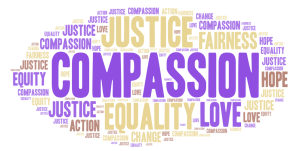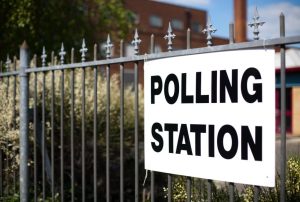Child Poverty on the Rise
7 June 2024
By Becca Bor
New Research Shows Tackling Child Poverty Needs to be a Critical Election Priority
As the General Election fast approaches, a new study reveals the breakdown of rising child poverty rates right across Northern Ireland, with more than 20% of children now living in poverty in most constituencies. In light of this research for the End Child Poverty Coalition, carried out by Loughborough University, the Coalition is urging all political parties to make child poverty a top priority in their campaigns through bold and decisive action.
- In 14 of the 18 NI constituencies – More than 1 in 5 children live in poverty, with a rate of over 1 in 4 children in 4 constituencies.
- Levels of child poverty in Northern Ireland vary dramatically, indicating clear geographic inequality, with the highest rate is in west Belfast – 32%; the lowest is in north Down – 18%
- In north Belfast 28.8% of children live in poverty; in Newry & Armagh – 27.2%; in Foyle – 25.3%
- 1 in 10 (over 45,000 children) live in a family whose benefit payments are reduced by the two-child limit.
- 16% of children in west Belfast are impacted by the 2-child policy and 32% of children are living in poverty.
Both the Northern Ireland Anti-Poverty Network and Save the Children NI believe these figures prove child poverty should be a key priority for parties in their election campaigning. The statistics show that child poverty is increasing across Northern Ireland, and the UK. It is critical that politicians address this in their campaigns, especially as more and more families are crippled by the cost of living.
Across the UK child poverty costs an estimated £39 billion a year, and the recent NI Audit Office Report estimates child poverty costs between £825 million to £1 bn a year in Northern Ireland. The government cannot afford to ignore the issue any longer.
“This election is a chance to prioritise children and their families. The political parties across the UK must urgently address the injustice that in a society as wealthy as the UK, a single child – let alone 1 in 4 – faces the reality of hunger, cold houses, and social deprivation.
“Rising costs, low wages, unaffordable and inaccessible childcare and rising housing costs are making it impossible for families to make ends meet. Across Northern Ireland, the Trussell Trust reports an 11% increase in food bank usage this past year.
“Politicians have a duty to guarantee that the social security system is fit for purpose and is there for us all when we need it. We need an evidence based Anti-Poverty Strategy which invests in children and ensures they all can flourish, rather than push families into poverty.“
Becca Bor, Northern Ireland Anti-Poverty Network
Across Northern Ireland 10% of children live in a family whose benefit payments are reduced by the unfair two-child limit. We know this policy pushes families into poverty by reducing benefits by up to £3,455 for every third or subsequent child born to a family after April 2017. It is not surprising that the highest rates of child poverty are in the areas where the highest number of children are impacted by this unfair policy. If the government is serious about tackling child poverty it must be scrapped.
“Children in Northern Ireland are being held back by poverty. Financial hardship early in life is difficult to recover from and it robs children of reaching their full potential.
“Ahead of the General Election all Parties here must prioritise tackling child poverty and ensure no child is forgotten. A first step is to abolish the unfair two child limit and support all children when they need it most.”
Naomi McBurney Policy and Public Affairs Adviser for Save the Children NI
Read the full report ‘Local indicators of child poverty after housing costs, 2022/23’
| Constituency | Number Children living in Poverty (22-23) | Percentage 22-23 |
| Belfast East | 4070 | 18.4% |
| Belfast North | 7167 | 28.9% |
| Belfast South and Mid Down | 4218 | 19.4% |
| Belfast West | 8222 | 32.0% |
| East Antrim | 4447 | 21.1% |
| East Londonderry | 5732 | 24.3% |
| Fermanagh and South Tyrone | 6919 | 23.9% |
| Foyle | 6363 | 25.3% |
| Lagan Valley | 5260 | 19.3% |
| Mid Ulster | 6513 | 23.5% |
| Newry and Armagh | 8022 | 27.2% |
| North Antrim | 5676 | 23.3% |
| North Down | 3681 | 18.0% |
| South Antrim | 5362 | 20.9% |
| South Down | 6607 | 24.9% |
| Strangford | 4773 | 22.5% |
| Upper Bann | 7390 | 23.8% |
| West Tyrone | 6237 | 24.4% |
- The End Child Poverty Coalition is made up of 120 organisations including child welfare groups, social justice groups, faith groups, trade unions and others. Together with a group of Youth Ambassadors, members campaign for a UK free of child poverty.
- This research uses a Relative After Housing Costs measure of child poverty. ‘After Housing Costs’ shows the income available to a household once rent, water rates, mortgage interest payments, buildings insurance payments, ground rent and service charges are paid. This enables a more accurate comparison of what households have available to spend on food, utilities, clothing and leisure, than looking at income alone, given the disparity of rents in different parts of the UK.
- The statistics on local child poverty rates after housing costs presented in today’s report are calibrated to the Department for Work and Pensions’ (DWP) Households Below Average Income (HBAI) dataset for FYE 2022 and FYE 2023. The DWP’s data have undergone quality assurance, by this department, prior to publication. However, some issues remain; this is partly due to sampling issues related to the Covid-19 pandemic. We advise that users are encouraged to exercise caution when interpreting the data. We further recommend that users of these Local Child Poverty Statistics focus on longer-term trends to understand how poverty has changed in an area rather than year-on-year changes which are prone to fluctuations, and avoid direct comparisons of the overall rates of child poverty between nations and regions.







